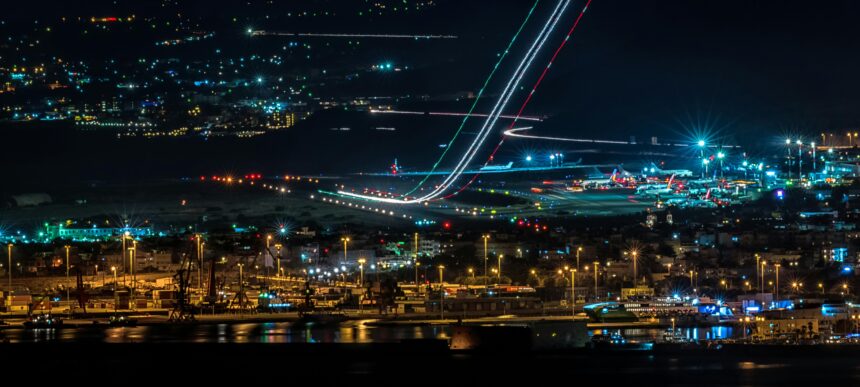A devastating mid-air collision occurred on the evening of January 29, 2025, near Ronald Reagan Washington National Airport, resulting in the crash of an American Airlines regional jet and a U.S. Army Black Hawk helicopter over the Potomac River. The tragic accident has sparked widespread concern and a full-scale FAA and NTSB investigation into the circumstances that led to this aviation disaster.
At approximately 9:00 p.m. EST, an American Airlines Bombardier CRJ700 aircraft, operated by PSA Airlines, was making its final approach to Runway 33 at Reagan National Airport when it collided mid-air with a U.S. Army UH-60 Black Hawk helicopter. The passenger jet was en route from Wichita, Kansas, carrying 60 passengers and four crew members, while the military helicopter had three personnel on board and was conducting a routine training mission from Fort Belvoir, Virginia. The collision created a massive fireball in the sky, as reported by air traffic controllers and eyewitnesses. Shortly after impact, both aircraft lost control, with the jet crashing into the Potomac River, while wreckage from the helicopter fell across the Arlington, Virginia area.
Emergency response teams were immediately dispatched to the scene, with the Coast Guard, firefighters, military personnel, and local law enforcement launching an extensive search and rescue operation. Despite the icy waters of the Potomac River, rescuers managed to recover four survivors, who were quickly transported to local hospitals for medical treatment. However, the majority of passengers and crew members remain unaccounted for, with fears that the death toll could be significant. Divers and recovery teams have been working tirelessly to locate survivors, retrieve wreckage, and assess the full extent of the tragedy. Search operations have been complicated by strong currents and low visibility in the river.
Eyewitnesses near the airport reported seeing a large explosion in the sky, followed by debris falling into the water. An air traffic controller, who was in communication with both aircraft, described seeing a “fireball at the moment of impact”, after which the American Airlines jet disappeared from radar. Preliminary reports suggest that the Black Hawk helicopter was advised to “pass behind” the approaching jet. However, there may have been miscommunication or a visual misidentification, leading to the fatal mid-air collision. One survivor, who was on board the American Airlines flight, described the moment of impact as “a violent jolt, followed by chaos inside the cabin”. Passengers screamed as the plane rapidly lost altitude before crashing into the river.
In the wake of the incident, all flights at Reagan National Airport were temporarily suspended to allow for emergency response efforts. Several inbound flights were diverted to nearby airports, including Dulles International Airport and Baltimore-Washington International Airport. The Federal Aviation Administration (FAA) issued an airspace restriction over the area to facilitate recovery efforts and ensure safety. The crash has also raised concerns about air traffic safety protocols near busy metropolitan airports. With military aircraft frequently conducting training missions in the region, aviation experts are now questioning whether additional safety measures are needed to prevent similar incidents in the future.
The FAA and the National Transportation Safety Board (NTSB) have launched a full-scale investigation into the causes of the accident. Early reports suggest that a miscalculation in flight paths or a breakdown in communication between air traffic control and the Black Hawk crew may have contributed to the collision. The U.S. Army has confirmed that the Black Hawk helicopter was on a scheduled training mission and was following standard flight procedures. However, investigators are reviewing flight recordings and radar data to determine if there were any procedural violations or technical failures. In a public statement, the U.S. Department of Transportation called the crash a “devastating loss” and assured the public that every effort is being made to determine the cause and prevent future tragedies.
President Donald Trump addressed the nation following the crash, expressing his condolences to the families affected by the tragedy. He also praised the bravery of the first responders and rescue teams working tirelessly at the scene. “Our thoughts and prayers are with the families of those affected by this terrible accident,” he said. The aviation community has been deeply shaken by the crash, with pilots and flight safety experts calling for an urgent review of air traffic management protocols near high-density flight zones. The incident marks the first fatal commercial aviation accident in the United States since 2009, making it a critical event in aviation history.
As the investigation progresses, authorities are focusing on several key questions: Was the Black Hawk given proper clearance to operate in proximity to civilian air traffic? Did air traffic control issue conflicting instructions to the aircraft? Were there any mechanical failures or instrument malfunctions that contributed to the accident? Was there a breakdown in communication between the pilots and controllers? Investigators are analyzing the black box flight recorders from both aircraft, which could provide crucial insights into the final moments before impact. The NTSB has indicated that a preliminary report will be released within two weeks, while a full report could take several months to complete. Aviation experts stress that lessons from this disaster must be applied to improve safety measures for both civilian and military aircraft operations.
As rescue and recovery efforts continue, families of the passengers and crew members are anxiously awaiting news about their loved ones. Memorial services are already being planned for those lost in the crash, and grief counseling services have been made available for affected families. The aviation community, military personnel, and the general public have come together in solidarity, offering their support and condolences. Many have taken to social media to express their sorrow and demand answers about how such a catastrophic event could happen.
The plane crash over the Potomac River is a devastating reminder of the risks associated with air travel, even with today’s advanced aviation technology. This tragedy has not only claimed lives but also raised serious concerns about air traffic management in busy airspaces. With investigations underway, the world awaits answers on what led to this mid-air disaster and how similar accidents can be prevented in the future. For now, the nation mourns, and the focus remains on honoring the victims, supporting their families, and learning from this heartbreaking tragedy. As more details emerge, this event will likely serve as a turning point in aviation safety protocols, ensuring that such a catastrophe never happens again.






